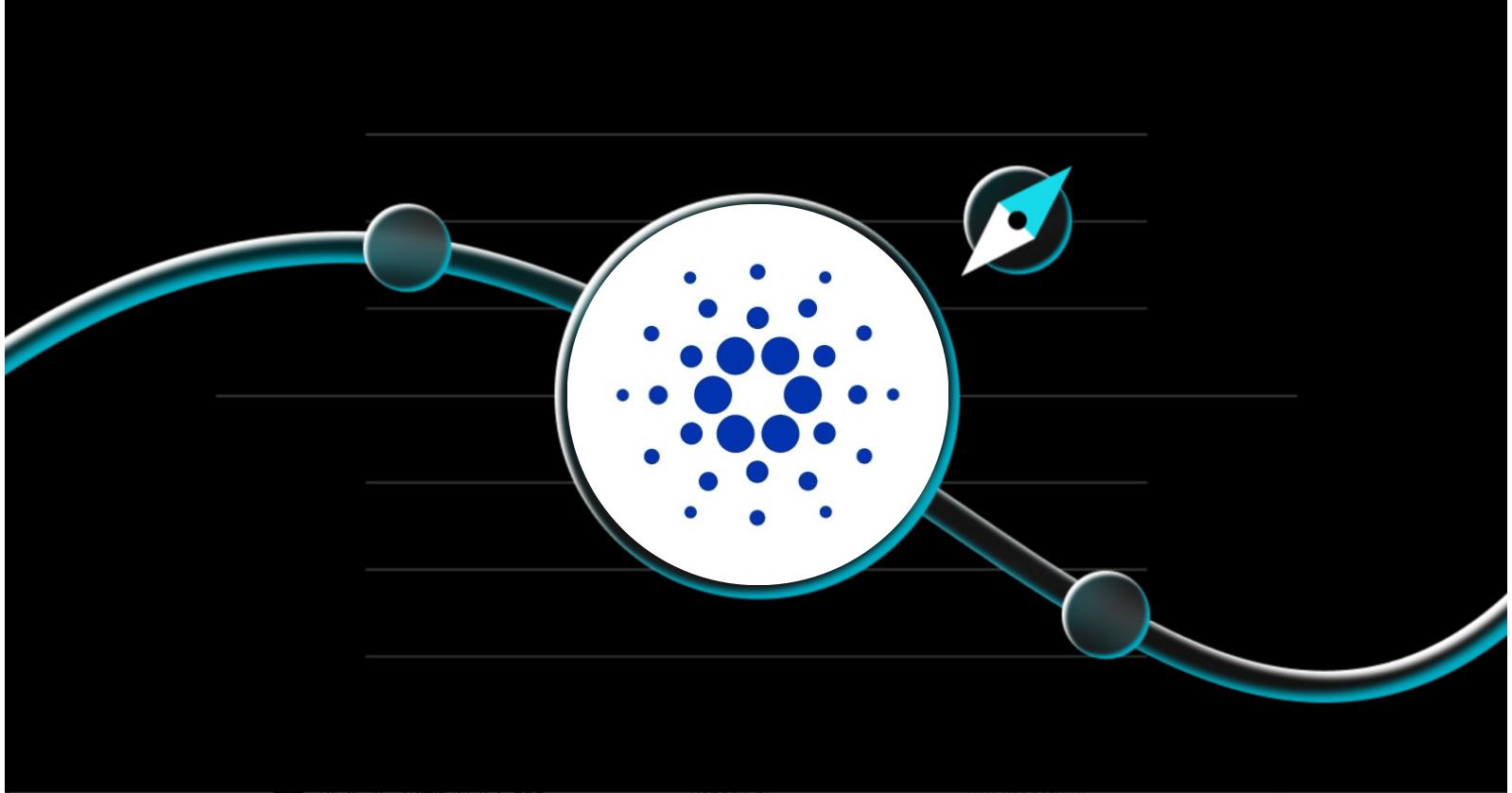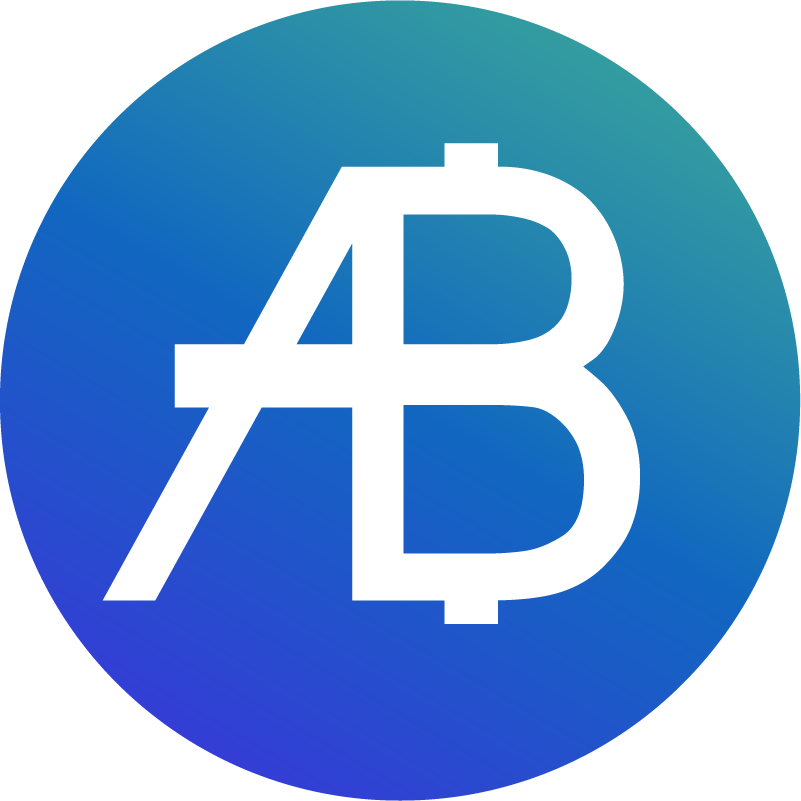Bitget:全球日交易量排名前4!
BTC 市场份额59.40%
当前ETH GAS:0.1-1 gwei
热门BTC ETF:IBIT
比特币彩虹图:考虑定投
比特币减半年份:2024年,2028年
BTC/USDT$ (NaN%)恐惧与贪婪指数50(中性)
山寨季指数:0(比特币季)
比特币现货 ETF 总净流入流出量 +$149.3M(1日);+$229M(7日)。Bitget 新用户立享 6200 USDT 欢迎礼包!立即领取
到 Bitget App 随时随地轻松交易!立即下载
Bitget:全球日交易量排名前4!
BTC 市场份额59.40%
当前ETH GAS:0.1-1 gwei
热门BTC ETF:IBIT
比特币彩虹图:考虑定投
比特币减半年份:2024年,2028年
BTC/USDT$ (NaN%)恐惧与贪婪指数50(中性)
山寨季指数:0(比特币季)
比特币现货 ETF 总净流入流出量 +$149.3M(1日);+$229M(7日)。Bitget 新用户立享 6200 USDT 欢迎礼包!立即领取
到 Bitget App 随时随地轻松交易!立即下载
Bitget:全球日交易量排名前4!
BTC 市场份额59.40%
当前ETH GAS:0.1-1 gwei
热门BTC ETF:IBIT
比特币彩虹图:考虑定投
比特币减半年份:2024年,2028年
BTC/USDT$ (NaN%)恐惧与贪婪指数50(中性)
山寨季指数:0(比特币季)
比特币现货 ETF 总净流入流出量 +$149.3M(1日);+$229M(7日)。Bitget 新用户立享 6200 USDT 欢迎礼包!立即领取
到 Bitget App 随时随地轻松交易!立即下载

山寨季指数
在哪里购买交易量最大的加密货币?在 Bitget 上追踪流动性和交易量最大的山寨币。
Bitget 山寨季指数页面提供有关加密货币市场是否处于山寨季的实时分析。查看详细图表和指标,追踪市场动态和山寨币的主导趋势。
当前的山寨季指数:
非山寨季 - 30
过去90天,市值前100的加密货币中,只有30个币种的价格表现超过了比特币,表明加密货币市场目前不处于山寨币主导的阶段。 立即交易
30
比特币季山寨季
历史数据
昨天非山寨季 - 33
7天前非山寨季 - 35
30天前非山寨季 - 58
年度最高值/最低值
年度最高值山寨季 - 87
2024-12-03
年度最低值比特币季 - 12
2025-03-05
最近更新时间
市值排名前100的山寨币近90天内的价格表现
查看所有币种价格详情
关于山寨季指数
什么是山寨季指数?
山寨季指数是一种工具,用于衡量山寨币(即比特币以外的加密货币)与比特币的相对表现。该工具通过分析历史价格数据和市场趋势,判断市场重心是否转向山寨币,或依然集中在比特币上。
如何识别山寨季?
通常情况下,当特定时间段内(如90天)表现最好的加密货币中绝大多数是山寨币而非比特币时,就被认为出现了山寨季。山寨季指数汇总了这些数据,当山寨币超过比特币表现时,指数分数较高;而当比特币更具主导性时,指数分数则较低。
如何使用山寨季指数?
山寨季指数以各种方式帮助交易者和投资者:
- 识别市场情绪向山寨币转变的信号。
- 根据山寨币的表现调整市场进出时机。
- 根据市场变化调整投资组合。
什么是山寨币市场?
山寨币市场包括所有除比特币之外的加密货币,涵盖如以太坊等成熟代币、去中心化金融(DeFi)中的流行代币以及新兴项目。“山寨币市场”这一术语通常指投资者对这些替代加密货币的兴趣和交易活动。
哪些山寨币值得关注?
以太坊是最具代表性的山寨币之一,因其智能合约功能和强大的开发者社区而受到关注。其他重要的山寨币包括币安币(BNB)、Solana(SOL)和 Cardano(ADA),其各自拥有庞大的用户基础和独特应用。
该指数包含哪些山寨币?以太坊(Ethereum)是否被视为山寨币?
山寨季指数通常包括基于市值和交易量的领先山寨币,如以太坊(Ethereum)、XRP、Litecoin 和 Cardano。是的,以太坊被视为山寨币,因为它不是比特币;它是独立开发的且拥有其区块链,并专注于智能合约。
指数背后的计算方法是什么?
山寨季指数的计算方法通常包括:
- 根据市值和交易量选择一组山寨币。
- 将这些山寨币与比特币在指定时间段(通常为90天)内的表现进行对比。
- 将这些数据编制成一个单一指数值,用以指示当前市场环境是更倾向于“比特币季”还是“山寨季”。
山寨季指数相关文章

Solana ETF on Nasdaq: Bitwise Solana ETP & Staking Rewards—2025 Investor’s Guide
Just last year, everyday investors witnessed a historic shift as the first spot Bitcoin and Ether ETFs launched on major US exchanges. These funds made it easier and safer for people to add top cryptocurrencies to their investment portfolios—no special wallets or technical know-how required. Shortly after, the Osprey Solana Staking ETF appeared, breaking new ground by letting investors earn rewards from Solana’s staking system right through a regular brokerage account.
Now, in October 2025, Solana is stepping further into the spotlight with the debut of the Bitwise Solana ETP on Nasdaq. This is more than just another crypto fund—it’s the first Solana ETF on a major exchange that combines price growth potential with built-in staking rewards. Whether you’re new to cryptocurrency or looking to diversify beyond Bitcoin and Ether, these new Solana ETFs make participating in the world of digital assets easier and more rewarding than ever before.
What is the Solana ETF and Why Is It a Big Deal?
Making Solana Accessible to All
A Solana ETF is a regulated exchange-traded fund that tracks the value and performance of Solana (SOL), letting investors buy and sell Solana exposure in their regular brokerage accounts, including Nasdaq accounts. No crypto wallets, no blockchain know-how—just direct Solana investment with traditional security and liquidity.
The Bitwise Solana ETP takes this further:
100% Direct Spot Exposure: The Bitwise Solana ETP physically holds SOL, offering true tracking rather than synthetics.
Built-in Staking: Bitwise stakes ALL of the fund’s SOL, distributing Solana staking rewards automatically to shareholders. No other US Solana ETF on Nasdaq or elsewhere offers this full integrated approach at scale.
Trading on Nasdaq: As one of the first altcoin spot ETFs available on Nasdaq, the Bitwise Solana ETP sets the bar for transparent, regulated SOL investing.
Solana Staking APY History: What Can Investors Expect Today?
How Has Solana Staking APY Changed Over Time?
The attractiveness of the Solana ETF is partly due to staking—the process of locking SOL to earn network rewards. Here’s a quick history:
2021: Solana staking APY was exceptionally high, often over 9%, as the network worked to attract validators and early adopters.
2022–2023: With more staking participation, APYs moderated, generally ranging from 6.5% to 7.5%.
2024: The APY stabilized between 6.8% and 7.3%, reflecting maturing tokenomics and ecosystem security.
Now, October 2025: Solana staking APY averages 7.1% across major validators. This competitive yield is passed through to Bitwise Solana ETP holders automatically.
Source: Helium
Why Staking in an ETF Matters:Most staking requires technical expertise or risky "yield-chasing" on DeFi. The Bitwise Solana ETP lets you capture this yield with Nasdaq-backed regulation, professional custody, and minimal fees.
Getting the Most from Your Investment: Bitwise Solana ETP on Nasdaq
Key Features Tailored for Investors
Ticker: BSOL
Exchange: Nasdaq (also available on select other US exchanges)
Management Fee: 0.20%, with 0% on the first $1B AUM for first three months
In-Kind Creation and Redemption: Keeps tracking tight to NAV
Backed by Helius: All staking beautifully managed under Bitwise Onchain Solutions via Helius technology
In short, the Bitwise Solana ETP on Nasdaq is an all-in-one Solana ETF solution designed for retail and institutional investors—providing instant SOL price exposure and seamless staking returns.
Solana Market Snapshot October 2025: Price, Cap & Technical Outlook
Current SOL Price: $203
Market Cap: Over $91 billion, solidifying Solana as the world’s sixth largest crypto asset
Recent Performance: SOL price surged 12% in the last week after $24M of fresh ETF inflows, driven by the success of the Bitwise Solana ETP on Nasdaq
Forecast: With both retail and institutional ETF demand accelerating, and technical resistance at $200 convincingly broken, analysts target $215 as the next key price ceiling—but volatility remains (as always in crypto).
Source: CoinMarketCap
JPMorgan estimates Solana ETFs (primarily the Bitwise Solana ETP) could attract up to $6 billion in AUM in 2025, far outpacing analyst expectations set only a year ago.
What Other Solana ETFs and Crypto ETPs Are Launching on Nasdaq and Beyond?
Grayscale Solana Trust (“GSOL”): Continues to grow, now supporting staking features and offered through major brokerages.
21Shares Solana ETF: Still awaiting regulatory greenlight as of October 2025, but expected to debut soon on Nasdaq.
REX/Osprey Solana Staking ETF: The first to offer direct staking exposure, but with lower AUM than Bitwise’s offering.
Canary Capital's Litecoin and Hedera ETPs: These and other altcoin ETFs/ETPs recently launched or announced for Nasdaq, signaling regulator confidence and deepening crypto-market integration.
Note: The SEC’s January 2024 greenlight for spot Bitcoin ETFs unleashed today’s flood of new Solana ETF, Bitwise Solana ETP, and other altcoin ETPs trading on Nasdaq.
Conclusion
October 2025 marks a tipping point: with the Bitwise Solana ETP live on Nasdaq, investing in SOL is now both easy and rewarding. By combining direct price exposure, institutional-grade custody, and built-in staking returns, the Solana ETF era is here for everyone, from first-timers to family offices. Watch nascent ETF volumes, Solana’s staking APY, and on-chain adoption metrics as this new wave of Nasdaq-listed products transforms both crypto and traditional finance.
Disclaimer: The opinions expressed in this article are for informational purposes only. This article does not constitute an endorsement of any of the products and services discussed or investment, financial, or trading advice. Qualified professionals should be consulted prior to making financial decisions.
Bitget 学院2025-10-28 09:17

Which Bitget Futures Bot Should You Use?
The Trader's Crossroads: Choosing Automated Strategy
Stepping into the world of automated trading with Bitget Futures Bots? Smart move. Our bots are designed to support sustainable trading with thoughtful position scaling, strategic automation, and controls that help you optimize execution without getting steamrolled by market noise or volatility.
Two of our most powerful tools, the Futures Grid and Futures Martingale bots, serve different purposes. One is built to patiently farm volatility in sideways markets; the other is a bold strategy designed to capture powerful reversals. This playbook will help you understand their core logic, choose the right one for the right market, and deploy with the right intention.
Bitget Futures Grid Bot: Your Sideways Market Specialist
The Futures Grid Bot is your workhorse for profiting from market oscillations. It automates the "buy low, sell high" principle by placing a series of buy and sell orders within a price range you define.
Best Market Condition: Sideways / Range-bound markets with lots of fluctuations.
This bot thrives when a trading pair is bouncing between clear support and resistance. It's designed to harvest mid-range volatility while you stay hands-off.
Example: The Slow Bleed
Let's say a volatile altcoin, TRX, currently is in a confirmed downtrend. You launch a TRX/USDT Short bot:
Trader A launches a Short Martingale bot. The price drops, but then a sharp, unexpected bounce occurs. The bot is forced to add a larger safety order at a worse (higher) price, increasing its risk.
Trader B deploys a Short Futures Grid bot with a price range from $0.2965 - $0.3436 to cover the downward channel. As TRX grinds down, the bot works perfectly. It automatically sells the weak bounces and buys back on the dips, taking small, consistent profits from the volatility. It is farming the market noise.
Result: Futures Grid outperforms Futures Martingale.
Why Futures Grid works:
● Profits from volatility, not just direction: Its goal isn't to catch one big move, but to profit from the hundreds of small moves within the trend.
● Avoids risk accumulation: Unlike martingale, it isn't adding to a losing position during counter-trend bounces. It takes profits and resets.
● Maintains structure and discipline: In a chaotic, choppy market, the grid provides a rigid, emotionless framework for execution.
When to use this strategy:
● In clear, grinding trends that have consistent volatility.
● On assets known for choppy price action rather than clean, smooth trends.
● When your goal is to generate steady, smaller profits from market noise rather than betting on one major reversal.
Key Risk: The breakout. The primary risk is a strong breakout where the price moves decisively outside your set grid range, leaving your bot idle.
Tips: Always set a stop-loss in the bot parameters. This is your automated safeguard, protecting your capital if the market trend turns sharply against your grid.
Bitget Futures Martingale Bot: The Reversal Hunter
The Futures Martingale is a more aggressive tool built for a specific conviction: a market reversal is coming.
The basic principle behind the Martingale strategy is for investors to trade in a single direction. If a trade moves against them, a larger position is opened at subsequent intervals. When the market bounces back, the goal is for the next profitable trade to exceed the combined losses of all previous trades, with additional profit.
Bitget's Futures Martingale supports two-way transactions, meaning it can both go long and short to make a profit by leveraging potential market reversals. With customizable leverage and the ability to generate recurring profits, it provides traders with more trading opportunities and flexibility.
Best Market Condition: Trending markets with pullbacks.
This bot excels when you believe an asset is in a general uptrend but is experiencing a temporary dip, or when you believe a downtrend has bottomed out. It is not for flat or sideways markets.
Example: The V-Shaped Recovery
Let's say BTC is trading steadily. You launch a Long bot with the following parameters:
Suddenly, the market panics, and BTC plummets.
Trader A with a static Futures Grid bot running in a fixed range watches as the price falls straight through the grid floor. The bot's buy orders are filled, but then it goes idle, missing the explosive rally that follows.
Now, consider Trader B who deployed a Futures Martingale bot. As the price crashes, the bot automatically executes its larger "safety orders" at deeper price levels, aggressively buying the dip and dramatically lowering its average entry price. When the V-shaped recovery begins, the entire, now-large position becomes highly profitable long before the price returns to its original level.
Result: Futures Martingale outperforms.
Why Futures Martingale works:
● Turns fear into opportunity: While others panic, the bot systematically executes a plan to buy low.
● Automates Dollar-Cost Averaging (DCA): It removes emotion and averages down your entry at scale, which is hard to do manually in a fast-moving crash.
● Maximizes profit from the rebound: Because the average entry price is so low, even a partial recovery can lead to significant gains.
When to use this strategy:
● During sharp, V-shaped market reversals.
● When you have a strong conviction that a dip in a bluechip asset (like BTC or ETH) is temporary.
● After a major liquidation cascade has cleared out leverage and the market is poised for a bounce.
Key Risk: The trader's high-wire act. The main risk is liquidation if the market trends strongly against you without reversing. This is a higher-risk strategy that demands good risk control and discipline.
Tips: Use Bitget's built-in risk controls to trade responsibly:
● Use lower leverage. This gives your position more room to breathe.
● Set a maximum number of safety orders to limit your total exposure.
● Start small. Allocate only a small portion of your portfolio that you are comfortable risking.
Quick Comparison Table: Your Bot Cheat Sheet
Futures Grid
Futures Martingale
Best Market
Sideways / range-bound
Trending with pullbacks/reversals
Core Strategy
Buy low, sell high in a range
Average down on dips (DCA)
Profit Style
Small, consistent gains
Large gains from recovery
Risk Level
Lower risk (in sideways market)
High (needs good risk control)
Trader Profile
The range farmer
The reversal hunter
Conclusion: Match the Tool to the Trend
The most effective bot is the one that's aligned with the current market. The Futures Grid is your tool for maintaining structure and discipline in choppy markets, while the Futures Martingale is your high-conviction play for capturing reversals.
By correctly identifying the market, you move from guessing to strategizing. You are ready to build familiarity, gain insight, and let Bitget's bots do what they’re built for: opportunity capture in dynamic markets.
● Market looking choppy? Launch a Futures Grid Bot and farm volatility.
● Confident in recovery? Set up your Futures Martingale Bot with smart risk controls.
Disclaimer: Nothing in this article should be construed as financial advice. Profitability is affected by many factors, and the data in the above examples is for illustrative purposes in an ideal situation. Past performance is not a guarantee of future results.Digital asset prices are highly volatile and may undergo significant fluctuations. Investors should only invest funds they can afford to lose. The value of your investment may change, and there is no guarantee of achieving financial goals or recovering your principal. Investors are advised to seek independent financial advice and carefully assess their own financial experience and circumstances. Bitget assumes no liability for any potential losses. For more information, refer to our Terms of Use and Futures Service Agreement.
Bitget 学院2025-10-16 08:53

Cardano (ADA) Price Prediction for October 2025: Will ETF Approval Finally Push ADA Above $1?
Crypto traders are welcoming “Uptober” 2025 with growing excitement as markets show renewed strength. Bitcoin has surged beyond $120,000, setting a fresh all-time high on the back of ETF inflows and institutional demand, while Ethereum holds firm near multi-year highs. The upbeat sentiment is spilling over into altcoins — and among them, Cardano (ADA) is capturing renewed interest. Known for its research-based development and consistent community support, Cardano remains a top-10 cryptocurrency and continues to gain legitimacy, recently earning a 1.2% weighting in the Hashdex Nasdaq Crypto Index ETF.
Still, ADA’s price lingers below the $1 mark, well short of its 2021 peak near $3. That gap between progress and price has traders asking: could an ETF approval finally be the spark ADA needs to reclaim $1? With the U.S. SEC preparing decisions on several crypto ETFs this month — including two focused on Cardano — the coming weeks could be pivotal. This article explores ADA’s current market position, the ETF timeline, ongoing on-chain upgrades like Chang, Hydra, and Ouroboros Leios, and what analysts expect from Cardano through this much-anticipated October.
Cardano (ADA) Market Overview: Price Trends and Investor Outlook
Cardano (ADA) Price in October
Source: CoinMarketCap
As of early October 2025, Cardano (ADA) is trading in the $0.83–$0.86 range, showing mild recovery momentum after a quiet few weeks. The token has climbed roughly 67% from its year-to-date low, reflecting growing confidence among long-term holders as the broader crypto market gains strength. However, ADA continues to face familiar headwinds. The $0.95–$1.00 zone remains a stubborn resistance area — both psychologically and technically — where traders often take profits. On the flip side, support levels around $0.75 have proven resilient, partly thanks to whale accumulation and renewed interest from institutional players positioning ahead of potential catalysts.
Investor sentiment toward Cardano is cautiously optimistic heading into October. Many traders see the current consolidation as a buildup before a breakout, especially with the ETF decision looming later this month. The overall crypto market’s positive tone, led by Bitcoin’s record-setting rally, has also helped stabilize ADA’s price action. Still, analysts caution that a convincing move above $1.00 will likely require a strong catalyst — either a favorable regulatory outcome or a surge in trading volume. For now, ADA appears to be coiling between support and resistance, quietly preparing for what could be a decisive month in its 2025 journey.
ETF Approval on the Horizon — Will It Be a Game-Changer?
One of the biggest storylines for Cardano (ADA) this October is the long-awaited ETF decision. After years of speculation, October 2025 could finally bring clarity as the U.S. Securities and Exchange Commission (SEC) prepares to rule on two major proposals:
Grayscale’s application to convert its existing Cardano Trust into a spot ADA ETF (decision expected October 7).
Tuttle Capital’s proposal for a standalone Cardano ETF (decision expected October 26).
These two dates have become focal points for ADA investors, with many viewing this month as potentially decisive for the token’s short-term direction.
If an ETF is approved, the potential impact could be significant:
It would open regulated access for traditional investors, including hedge funds and retirement accounts, to gain ADA exposure without direct crypto custody.
Analysts expect a notable liquidity boost, similar to the inflows seen after the approval of Bitcoin and Ethereum ETFs.
A positive decision could lead to a 20–30% price rally, possibly allowing ADA to finally break above the $1 mark for the first time in years.
However, some market watchers caution that the optimism might already be priced in. A delay or rejection could trigger short-term disappointment and a fallback toward the $0.70–$0.75 range.
Prediction markets currently assign over a 90% chance of at least one ADA ETF being approved this month, reflecting strong bullish sentiment. Still, history suggests that even positive regulatory news can bring volatility. For now, the Cardano community is waiting with cautious optimism.
Cardano’s On-Chain Upgrades and Ecosystem Roadmap
While traders focus on ETF headlines, long-term investors are paying attention to Cardano’s steady technical progress. Over the past year, the network has advanced through major upgrades that strengthen its scalability, governance, and developer ecosystem — reflecting its vision of a sustainable, research-driven blockchain.
Key milestones shaping Cardano’s roadmap include:
Chang Hard Fork (Voltaire Era): Introduces on-chain governance, allowing ADA holders to vote through Delegate Representatives (DReps) and shaping a more community-driven decision model.
Ouroboros Leios: A next-generation consensus protocol designed to greatly increase transaction throughput and network efficiency.
Hydra Scaling Solution: A layer-2 upgrade enabling near-instant, low-fee transactions — ideal for DeFi, gaming, and everyday payments.
Mithril Protocol: Uses stake-based snapshots to speed up node synchronization, improving security and accessibility.
Midnight Sidechain: Cardano’s upcoming privacy-focused sidechain, supporting confidential smart contracts and selective transparency for compliance.
Together, these upgrades aim to enhance governance, scalability, and privacy — the three pillars of Cardano’s long-term roadmap. Even if they don’t move ADA’s price immediately, they strengthen the project’s fundamentals and make Cardano one of the most technologically prepared platforms heading into 2026.
Expert Opinions on Cardano (ADA): Cautious Optimism or Overhype?
As ETF anticipation builds, market analysts are weighing in on Cardano’s (ADA) prospects for October 2025. The community’s focus is clear: will ETF approval finally drive ADA above $1, or is the market getting ahead of itself? Opinions remain divided, with analysts split between cautious realism and renewed optimism.
On the bullish side, market strategists believe that a successful ETF approval could reprice ADA higher and finally push it above the long-standing $1 barrier. Several reports suggest that if institutional capital flows into ADA through ETFs, its valuation could climb 20–30% in the short term, and possibly reach $1.20–$1.30 by the end of October. These predictions assume continued momentum from Bitcoin’s rally and steady progress in Cardano’s ecosystem.
However, more cautious analysts argue that much of this optimism is already reflected in the current price. They note that Cardano’s on-chain activity, while growing, still lags behind networks like Ethereum and Solana. From this perspective, even if an ETF is approved, ADA could see a “buy the rumor, sell the news” effect — rallying briefly before returning to its consolidation range near $0.80–$0.90.
Cardano (ADA) Outlook for October 2025: Bullish, Neutral, or Bearish?
While no one can predict the exact outcome, three likely scenarios capture the range of possibilities investors are watching most closely.
1. Bullish Scenario – ETF Approval and Momentum Builds
If the SEC gives the green light to at least one Cardano ETF, ADA could see a strong breakout above $1, ending its long period of consolidation. Increased institutional access might drive short-term gains of 20–30%, pushing prices toward $1.20–$1.30. In this case, optimism from both retail and institutional investors could help ADA maintain higher levels through the end of the month.
2. Neutral Scenario – Delays or Modest Reaction
If the decision is delayed or approval fails to spark major inflows, ADA may remain rangebound between $0.80 and $0.95. Traders could interpret the lack of immediate excitement as a “wait-and-see” moment, keeping volatility low. The broader market’s tone — especially Bitcoin’s performance — would likely dictate ADA’s short-term direction under this outcome.
3. Bearish Scenario – Rejection or Market Pullback
If the SEC rejects the ETF or delivers another setback to altcoin-focused funds, ADA might retrace toward its support zone around $0.70–$0.75. A rejection would likely trigger short-term selling pressure, especially from speculative positions built on ETF optimism. Even so, many long-term holders are expected to use lower prices as a buying opportunity, confident in Cardano’s continued network growth and upcoming upgrades.
Conclusion
The coming weeks could prove decisive for Cardano (ADA). With the ETF decision on the horizon, investors are watching closely to see whether this long-anticipated event will finally give ADA the momentum to move past $1. It’s a moment charged with possibility — the kind that could either confirm Cardano’s return to market strength or remind everyone how unpredictable the crypto landscape can be.
Yet beyond the speculation, Cardano continues to chart its own deliberate path. Its progress through upgrades like Ouroboros Leios, Hydra, and Midnight shows a project focused not just on price, but on building a resilient foundation for the future. Whether or not the ETF acts as a short-term spark, Cardano’s evolution suggests something deeper: a network preparing for a phase of growth that may unfold when the market least expects it.
Disclaimer: The opinions expressed in this article are for informational purposes only. This article does not constitute an endorsement of any of the products and services discussed or investment, financial, or trading advice. Qualified professionals should be consulted prior to making financial decisions.
Bitget 学院2025-10-06 07:48
山寨币的类型
山寨币在功能和共识机制上有所不同,根据这些差异,它们可以被划分为多个类别。以下是一些主要类别的简要指南:
基于挖矿产生的山寨币基于挖矿产生的山寨币是依赖于挖矿过程来完成交易验证和区块链更新的加密货币。根据山寨币的设计,这一过程可能使用工作量证明(PoW)共识机制。比特币、莱特币和门罗币是最著名的挖矿型山寨币。
公链币公链币是原生代币,用于支持和运作像以太坊(ETH)、Solana(SOL)和 Avalanche(AVAX)这样的区块链平台。它们主要用于支付网络交易手续费、执行智能合约以及参与网络治理。
稳定币稳定币与美元或欧元等法定货币的价值紧密挂钩,确保用户能够在维持价格稳定的同时,实现快速且低成本的价值转移。
实用代币实用代币用于在特定区块链平台或去中心化应用(DApp)中获取产品或服务。例如,用户可能需要购买实用代币,以便在去中心化云平台上获取存储空间,或参与去中心化金融(DeFi)服务。
证券代币证券代币是基于区块链的数字资产,与传统证券具有相似性。它们可能以所有权、分红支付或债券的形式提供权益。证券代币通常通过证券代币发行(STO)或首次交易所发行(IEO)推出。
模因币模因币是一种由互联网和社交媒体推动流行的加密货币,除了社区的支持和炒作,它们通常没有显著的实际用途或基础价值。典型的模因币包括 DOGE、SHIB、PEPE 和 GOAT。
Bitget新上架的山寨币
| 名称 | 最新价 | 涨跌幅 | 24小时成交额 | 上线时间 | 交易 |
|---|---|---|---|---|---|
 COMMON/USDT | 0.0143 | -21.42% | 354.78万 | 2025-10-27 | 交易 |
 VELVET/USDT | 0.21779 | +5.48% | 251.79万 | 2025-10-24 | 交易 |
 APR/USDT | 0.35923 | +1.54% | 335.58万 | 2025-10-23 | 交易 |
 MET/USDT | 0.4747 | +7.81% | 201.08万 | 2025-10-23 | 交易 |
 RVV/USDT | 0.0092651 | -8.10% | 111.02万 | 2025-10-18 | 交易 |
 ZBT/USDT | 0.22973 | -4.67% | 79.59万 | 2025-10-17 | 交易 |
 YB/USDT | 0.5854 | -1.33% | 302.93万 | 2025-10-15 | 交易 |
 RECALL/USDT | 0.4242 | -12.35% | 331.96万 | 2025-10-15 | 交易 |
 FLK/USDT | 0.1777 | -2.09% | 24.55万 | 2025-10-14 | 交易 |
 ENSO/USDT | 1.6616 | -11.95% | 169.89万 | 2025-10-14 | 交易 |
 LAB/USDT | 0.16711 | -6.58% | 71.91万 | 2025-10-14 | 交易 |
 KGEN/USDT | 0.28408 | +13.97% | 232.48万 | 2025-10-07 | 交易 |
 ASTER/USDT | 1.0786 | -0.38% | 968.03万 | 2025-10-06 | 交易 |
 P/USDT | 0.10679 | +1.53% | 208.94万 | 2025-10-03 | 交易 |
 CGN/USDT | 0.003451 | -21.28% | 371.95万 | 2025-10-23 | 交易 |
 2Z/USDT | 0.224628 | -1.88% | 109.53万 | 2025-10-02 | 交易 |
 NOM/USDT | 0.02072 | -4.25% | 58.57万 | 2025-10-01 | 交易 |
 EDEN/USDT | 0.1619 | -7.53% | 12.66万 | 2025-09-30 | 交易 |
 VFY/USDT | 0.07155 | -9.55% | 18.27万 | 2025-09-30 | 交易 |
 TOSHI/USDT | 0.000769 | -4.53% | 49.78万 | 2025-09-30 | 交易 |
更多 BTC 数据和行业专题
在 Bitget 上购买山寨币:领先的热门加密货币平台
想购买山寨币吗?通过 Bitget 应用,您可以直接购买 BGB 和其他主流山寨币。立刻了解如何在 Bitget 上购买山寨币。
Bitget app
买币指南
如何购买
Bitcoin (BTC)

如何购买
Ethereum (ETH)

如何购买
Ripple (XRP)

如何购买
Tron (TRX)

如何购买
Dogecoin (DOGE)

如何购买
Tezo (XTZ)

如何购买
Bitget Token (BGB)

如何购买
Polygon (POL)

如何购买
Solana (SOL)

如何购买
Terra Classic (LUNC)

如何购买
Fantom (FTM)

如何购买
Bitcoin Cash (BCH)

如何购买
Ethereum Classic (ETC)

如何购买
Litecoin (LTC)

如何购买
Binance (BNB)

如何购买
Avalanche (AVAX)

如何购买
Internet Computer (ICP)

如何购买
Tether (USDT)

如何购买
USDC (USDC)

如何购买
Uniswap (UNI)






































































































